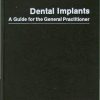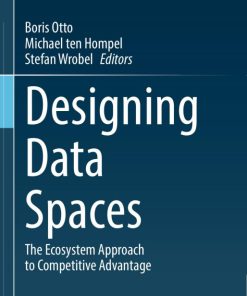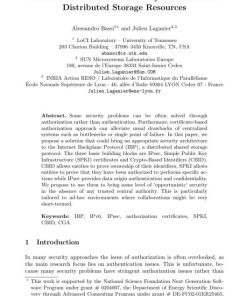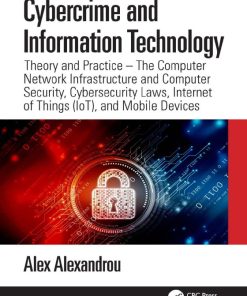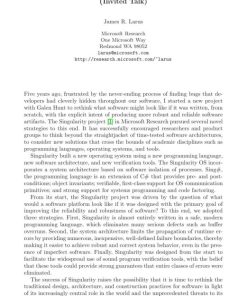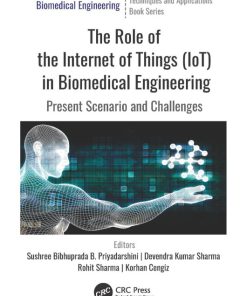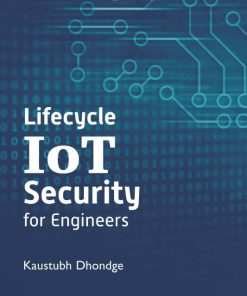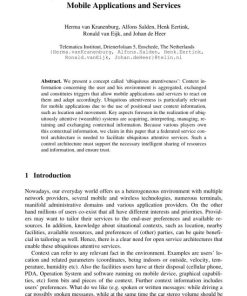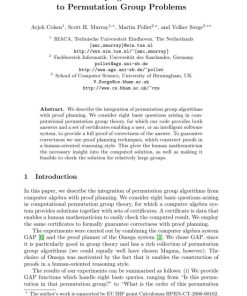Enabling Things to Talk Designing IoT solutions with the IoT Architectural Reference Model 1st edition 2013th Edition, Kindle Edition by Alessandro Bassi, Martin Bauer, Martin Fiedler, Thorsten Kramp, Rob van Kranenburg, Sebastian Lange, Stefan Meissner ISBN B00G9QO9J2 978-3642404023
$50.00 Original price was: $50.00.$25.00Current price is: $25.00.
Authors:Alessandro Bassi , Series:Computer Science [190] , Author sort:Bassi, Alessandro , Languages:Languages:eng , Published:Published:Oct 2013 , Publisher:IOT-A
Enabling Things to Talk Designing IoT solutions with the IoT Architectural Reference Model 1st edition 2013th Edition, Kindle Edition by Alessandro Bassi, Martin Bauer, Martin Fiedler, Thorsten Kramp, Rob van Kranenburg, Sebastian Lange, Stefan Meissner – Ebook PDF Instant Download/Delivery. B00G9QO9J2 978-3642404023
Full download Enabling Things to Talk Designing IoT solutions with the IoT Architectural Reference Model 1st edition after payment
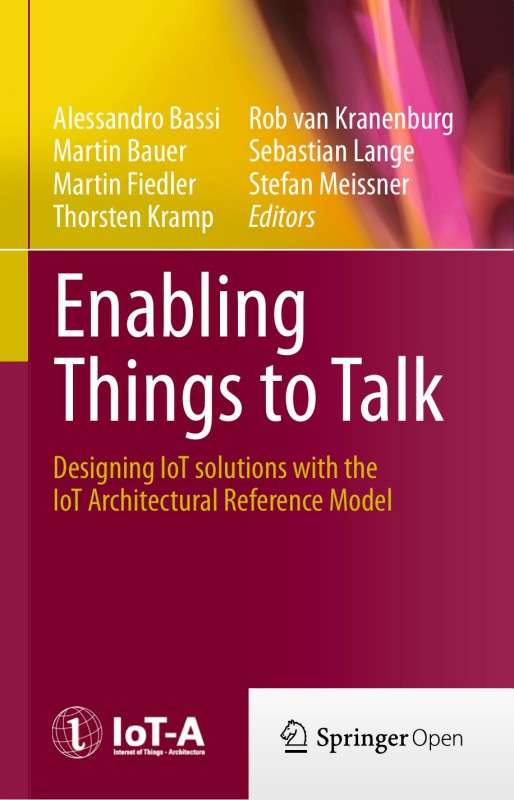
Product details:
ISBN 10: B00G9QO9J2
ISBN 13: 978-3642404023
Author: Alessandro Bassi, Martin Bauer, Martin Fiedler, Thorsten Kramp, Rob van Kranenburg, Sebastian Lange, Stefan Meissner
The Internet of Things (IoT) is an emerging network superstructure that will connect physical resources and actual users. It will support an ecosystem of smart applications and services bringing hyper-connectivity to our society by using augmented and rich interfaces. Whereas in the beginning IoT referred to the advent of barcodes and Radio Frequency Identification (RFID), which helped to automate inventory, tracking and basic identification, today IoT is characterized by a dynamic trend toward connecting smart sensors, objects, devices, data and applications. The next step will be “cognitive IoT,” facilitating object and data re-use across application domains and leveraging hyper-connectivity, interoperability solutions and semantically enriched information distribution.
The Architectural Reference Model (ARM), presented in this book by the members of the IoT-A project team driving this harmonization effort, makes it possible to connect vertically closed systems, architectures and application areas so as to create open interoperable systems and integrated environments and platforms. It constitutes a foundation from which software companies can capitalize on the benefits of developing consumer-oriented platforms including hardware, software and services.
The material is structured in two parts. Part A introduces the general concepts developed for and applied in the ARM. It is aimed at end users who want to use IoT technologies, managers interested in understanding the opportunities generated by these novel technologies, and system architects who are interested in an overview of the underlying basic models. It also includes several case studies to illustrate how the ARM has been used in real-life scenarios. Part B then addresses the topic at a more detailed technical level and is targeted at readers with a more scientific or technical background. It provides in-depth guidance on the ARM, including a detailed description of a process for generating concrete architectures, as well as reference manuals with guidelines on how to use the various models and perspectives presented to create a concrete architecture. Furthermore, best practices and tips on how system engineers can use the ARM to develop specific IoT architectures for dedicated IoT solutions are illustrated and exemplified in reverse mapping exercises of existing standards and platforms.
Enabling Things to Talk Designing IoT solutions with the IoT Architectural Reference Model 1st Table of contents:
Part I: IoT Fundamentals
Chapter 1: Introduction to the Internet of Things
-
The Internet of Things: Definition and Key Concepts
-
The Need for IoT Solutions
-
The IoT Value Proposition
-
Key Drivers and Trends in IoT Development
-
Challenges in IoT Deployment
Chapter 2: IoT Architecture Overview
-
What is IoT Architecture?
-
The Need for an Architectural Framework
-
Overview of the IoT Reference Model
-
Layers of the IoT Architecture
-
Mapping IoT Solutions to the Architecture
Chapter 3: Key IoT Technologies
-
Sensing and Actuation
-
IoT Networks and Connectivity
-
Edge Computing and Processing
-
Cloud Computing for IoT
-
Data Management and Analytics
-
Security and Privacy in IoT
Part II: The IoT Architectural Reference Model
Chapter 4: The IoT Reference Model
-
The IoT Architecture in Detail
-
Layered Approach to IoT Architecture
-
IoT Layer Definitions
-
Perception Layer
-
Network Layer
-
Middleware Layer
-
Application Layer
-
Chapter 5: Perception Layer
-
Sensing and Actuation Technologies
-
Sensors and Devices
-
Communication Technologies in the Perception Layer
-
Challenges and Design Considerations for the Perception Layer
Chapter 6: Network Layer
-
IoT Networking Fundamentals
-
Communication Protocols for IoT (e.g., MQTT, CoAP, HTTP)
-
Connectivity Standards (e.g., Bluetooth, Zigbee, LoRa)
-
Network Topologies and Design Considerations
-
Low-Power Wide Area Networks (LPWAN)
Chapter 7: Middleware Layer
-
The Role of Middleware in IoT
-
Data Management and Integration
-
IoT Platforms and Ecosystems
-
Application Enablement Platforms (AEP)
-
Edge and Fog Computing
Chapter 8: Application Layer
-
IoT Applications and Use Cases
-
Industry-Specific IoT Solutions (Smart Cities, Agriculture, Healthcare, etc.)
-
Designing IoT Applications
-
Managing and Scaling IoT Applications
Part III: Building IoT Solutions
Chapter 9: Design and Implementation of IoT Solutions
-
Designing IoT Systems with the IoT Architecture
-
Developing IoT Devices and Gateways
-
Software Development for IoT
-
Testing and Debugging IoT Solutions
-
Deployment Considerations for IoT
Chapter 10: Security and Privacy in IoT
-
Security Challenges in IoT
-
Security Principles and Techniques
-
Encryption and Authentication for IoT
-
Privacy Concerns and Compliance
-
Securing Data and Communication in IoT
Chapter 11: IoT Standards and Interoperability
-
IoT Standards and Protocols Overview
-
The Importance of Interoperability
-
Key IoT Standards (e.g., OneM2M, IETF, OCF)
-
Ensuring Interoperability Across IoT Platforms
Part IV: Advanced IoT Topics
Chapter 12: Future Trends in IoT
-
The Evolving Landscape of IoT
-
Emerging Technologies (5G, AI, Blockchain)
-
Autonomous Systems and IoT
-
The Role of IoT in Industry 4.0
Chapter 13: IoT Case Studies
-
Real-World Examples of IoT Solutions
-
Case Study 1: Smart City Solutions
-
Case Study 2: Industrial IoT (IIoT)
-
Case Study 3: Healthcare and Wearables
-
Lessons Learned from IoT Implementations
Conclusion
-
Summary of Key Concepts
-
The Future of IoT Architecture and Design
-
Final Thoughts on Designing Successful IoT Solutions
Appendices
-
A. Glossary of IoT Terms
-
B. IoT Resources and Further Reading
-
C. IoT Standards and Organizations
People also search for Enabling Things to Talk Designing IoT solutions with the IoT Architectural Reference Model 1st:
how to say enabling
how to enable push to talk
enabling examples
how to enable speech to text
enabling them
You may also like…
eBook PDF
(Ebook PDF) Artificial intelligence in IoT 1st edition by Fadi AI Turjman 3030041107 9783030041106
eBook PDF
Lifecycle IoT Security for Engineers 1st edition by Kaustubh Dhondge 9781630818043 1630818046



